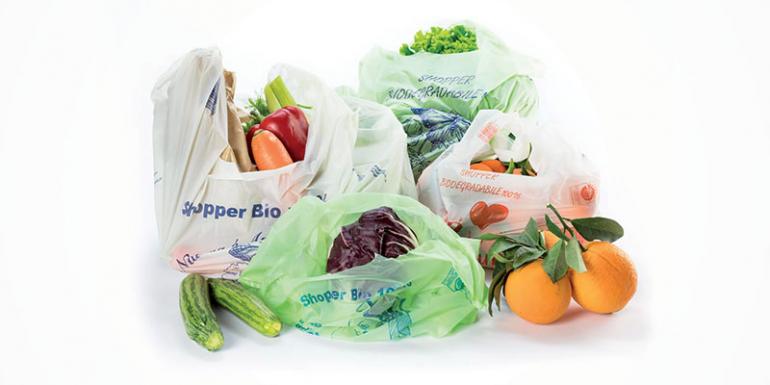Packaging and bioplastics – Data 2019

The bioplastics market in recent years has shown a marked growth trend, and in various areas of application it still has ample room for development. To strengthen its potential, the contribution that this sector is able to offer to the transition towards a circular economy model.
Barbara Iascone
Italian Packaging Insitute
According to the European Bioplastics Association, the term bioplastics defines plastics “which derive at least in part from a biomass (biobased or bio-based, such as those obtained for example from corn, wheat, sugar cane, etc...), or which are biodegradable, or have both characteristics “. To dissolve a widespread misunderstanding, it is therefore appropriate to emphasize that not all bioplastics are also biodegradable (i.e. able to decompose in a short time, thanks to the action of microorganisms present in the environment). Without prejudice to this premise, bioplastics offer some significant advantages in terms of reducing the environmental impact, which vary according to the type in question. In a nutshell, we can summarize that bioplastics allow you to free yourself from the use of non-renewable raw materials such as hydrocarbons, and in many cases, their production involves lower CO2 emissions than similar fossil-based variants; Furthermore, biodegradables allow to reduce the environmental impact linked to the “end of life” of the product and the dispersion of non-degradable plastic waste in the environment.
An expanding global market
For the reasons mentioned above, bioplastics are the subject of growing appreciation by consumers and their market is expanding, although their use for the production of finished products is still limited compared to the actual application potential.
According to the European Bioplastics association, around 2.11 million tons of bioplastics were produced globally in 2019, 53% of which were destined for the production of packaging (1.3 million t). Specifically, 58% was used for the production of flexible packaging, and 42% for rigid packaging.
By way of clarification, a reminder that the data provided by the association refer to the sector as a whole, which includes different categories of polymers, coming from both renewable resources (PHA, PLA and starch) and petrochemical (PBAT, PBS), such as pure biobased but not biodegradable plastics and “green” polyolefins made from bioethanol (sugar cane) or bioPET.
Globally, Europe is the second largest producer of bioplastics with a share of 25% (up on 2018) after Asia, which represents 45% of world production.
As highlighted in the annual report of the European Association of Bioplastic Producers, the sector will see steady growth over the next five years, estimated at around 15% overall. The reasons for this development are manifold: the shared objective of continuing the transition towards a circular economy model - supported by targeted policies and regulations - encourages production paradigms capable of reducing the release of polluting substances into the environment, greenhouse gas emissions, as well as the use of non-renewable raw materials.
| 2019 | |
|---|---|
| Total (in t) | 93,500 |
| Segmentation | % |
| Single use shopper | 62.0% |
| Ultralight pouches | 17,5% |
| Bags for biowaste | 15.0% |
| Other film(1) | 3.0% |
| Other applications(2) | 2.5% |
| 100.0% |
(1) Food film, agricultural film, packaging film.
(2) Cutlery, plates, glasses, thermoformed catering and gastronomy products, preforms, agricultural accessories, extrusion coating, etc...
Source: data processing Istituto Italiano Imballaggio
Bioplastics in Italy
In Italy, according to the first available estimates, in 2019 the production of bioplastics should register a growth rate of over 5%, reaching around 93,500 tons (compared to 88,500 tons in 2018). Analyzing the intended use of these materials, in first place we find the bags for the transport of goods (62%), followed by the ultralight bags for the packaging of loose products (17.5%); 20.5% is divided between the bags for the collection of the damp (15%) and other films (3%) such as those used in agriculture; the remaining portion includes disposable tableware, food packaging (e.g. trays) and personal care (2.5% in total).
The case of shoppers
According to data collected by the Italian Packaging Institute, in 2019 out of the total of plastic shopper bags (both traditional and biodegradable) and in Italy amounted to about 114,000 t, about 60% is made of bioplastic (around 68,400 tons).
The analysis of the collected data shows that, since 2018, the overall consumption of shoppers (plastic and bioplastic) has fallen by 5% (in 2018 there were about 120,000), where, however, at the same time, the percentage of those in bioplastic is increasing , coming to represent more than half of the total bags used in the national territory.
In Italy, the entry into force in January 2011 of the prohibition to trade traditional plastic shoppers (which also entails penalties for violators only since 2015) has resulted in an exponential increase in the use of bioplastic shoppers.
Subsequently, to align our country with the rest of Europe, a further directive introduced in January 2018 required that even the lightest bags for bulk food (fruit and vegetables, butchers, fishmongers and delicatessens) with thicknesses less than 15 microns must be in bioplastic.
The effect of these regulations has been twofold: if on the one hand they have speeded up the replacement of traditional plastic bags with bioplastic alternatives, on the other they have discouraged the use of disposable shopping bags, prompting consumers to choose more and more frequently for their shopping reusable bags, both plastic and of cloth.




















